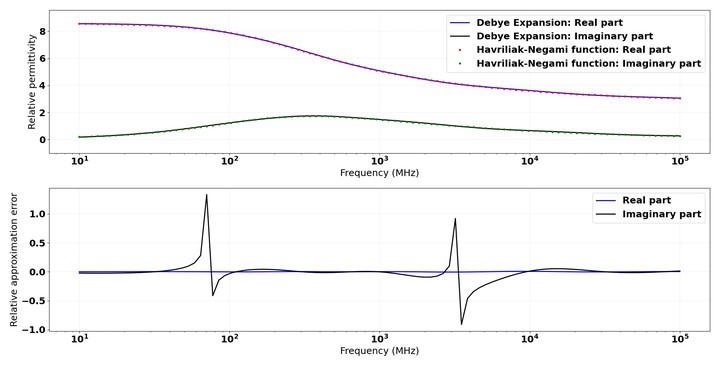Modelling Arbitrary Complex Dielectric Properties—an automated implementation for gprMax
 Image credit: IWAGPR 2021
Image credit: IWAGPR 2021Abstract
There is a need to accurately simulate materials with complex electromagnetic properties when modelling Ground Penetrating Radar (GPR), as many objects encountered with GPR contain water, e.g. soils, curing concrete, and water-filled pipes. One of widely-used open-source software that simulates electromagnetic wave propagation is gprMax. It uses Yee’s algorithm to solve Maxwell’s equations with the Finite-Difference Time-Domain (FDTD) method. A significant drawback of the FDTD method is the limited ability to model materials with dispersive properties, currently narrowed to specific set of relaxation mechanisms, namely multi-Debye, Drude and Lorentz media. Consequently, modelling any arbitrary complex material should be done by approximating it as a combination of these functions. This paper describes work carried out as part of the Google Summer of Code (GSoC) programme 2021 to develop a new module within gprMax that can be used to simulate complex dispersive materials using multi-Debye expansions in an automatic manner. The module is capable of modelling Havriliak-Negami, Cole-Cole, Cole-Davidson, Jonscher, Complex-Refractive Index Models, and indeed any arbitrary dispersive material with real and imaginary permittivity specified by the user.